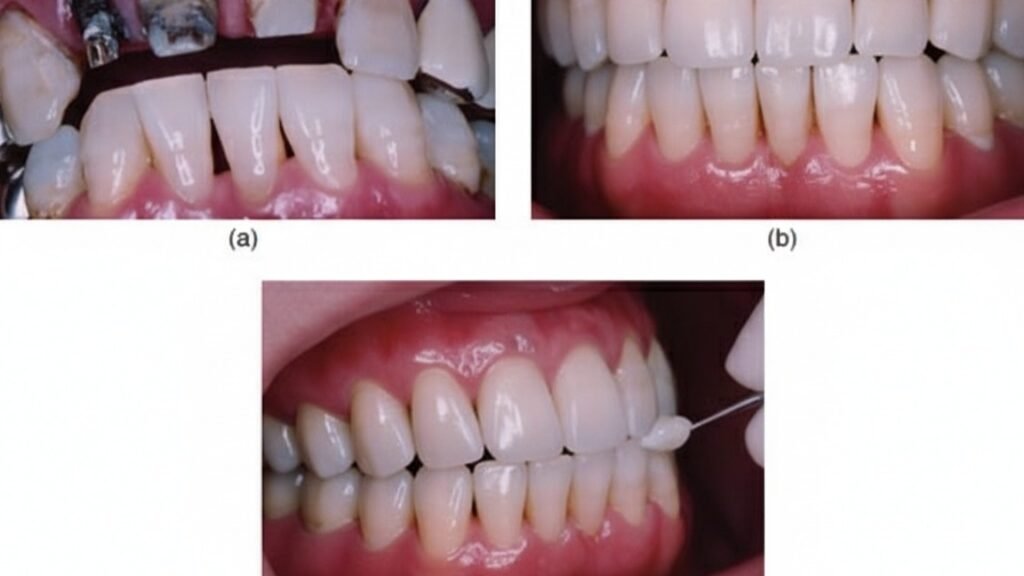When we go for a crown, filling, or implant, one small material does most of the work behind the scenes: that material is dental cement. It holds the restoration, seals the tooth, and keeps things comfortable. The right dental cement helps the work last and keeps the tooth safe. The wrong one can cause pain, repair needs, or the restoration to come loose.
What Is Dental Cement

Dental cement is a special mix dentists use to bond restorations like crowns, veneers, inlays, and posts to natural teeth. Some types set when they meet water in the mouth. Others harden by a chemical reaction or with light from an instrument. Dental cement also fills tiny gaps so bacteria cannot enter. The ingredients and the mix of powder and liquid control strength, taste, and how long the material will last.
Why Cement Choice Matters

If we pick the right dental cement, the restoration stays tight and does not leak. The wrong cement can let decay start under a crown or cause sensitivity. A good cement must handle chewing, avoid an allergic reaction, and resist saliva and water. It should also match the look of the tooth when needed and not dissolve easily. Choosing the best cement affects how long the work will last and how often we need to repair.
Types of Dental Cement Used by Dentists
Dentists classify cements by how they work. This classification helps us pick the best option fast.
- Zinc Phosphate Cement: Strong and long-lasting. Often used for metal crowns. It can cause mild sensitivity.
- Polycarboxylate Cement: Bonds to enamel and dentin and is gentler on the pulp.
- Glass Ionomer Cement (GIC): Releases fluoride to help prevent decay. Good for areas at risk of cavities.
- Resin-Based Cement: Gives a very strong bond and a natural look. Used for porcelain restorations.
- Resin-Modified Glass Ionomer Cement (RMGI): Combines fluoride release with added strength.
- Zinc Oxide Eugenol Cement: Used as a temporary option. It soothes tissue and is easy to remove.
Each type has different uses and a different feel when placed. Dentists choose based on the restoration and the tooth.
Temporary vs Permanent Cements

We separate cements into temporary and permanent. Temporary dental cement holds restorations short term. Dentists use it to test fit or allow healing. It is easy to remove. Permanent dental cement is made to last for years. It resists biting force and moisture. The dentist decides whether to use a temporary or permanent cement based on the treatment plan.
How Tooth Type Affects Cement Choice
Front and back teeth need different cements. Front teeth require material that is similar to the colour and provides smooth finishing, thus resin types are usually used in front teeth. Back teeth are used to do heavy chewing, and better cements such as zinc phosphate or RMGI are recommended. The position and role of the tooth will determine the cement that will offer the highest hold.
How Restoration Material Affects Cement Selection
The material of the crown, bridge, or filling matters. The traditional cements bond well with metal restorations. Ceramic resin-based or resin-modified cement is necessary to provide a clear and strong bond on porcelain. Resin cements are frequently used with composite posts since they adhere and can withstand a little moisture. Matching restoration and cement lowers solubility and improves how long the work will last.
Role of Tooth Condition and Decay
The tooth’s health changes the plan. If a tooth is weak or short after a broken tooth event, dentists choose stronger adhesive cements to improve retention. In the case of the presence of decay or pulp irritation, an interim cement such as Zinc oxide eugenol could be applied to soothe the tooth first, after which the permanent cement is applied. The sequential process eases and prevents the failure of the tooth.
How Moisture and Saliva Impact Cement Bonding

Moisture control is essential. Too much saliva weakens the bond. Too little moisture can stop the cement from flowing. Some resin-based cements handle slight moisture better. Glass ionomer types are more sensitive while they set. Dentists use suction, barriers, and careful technique so the cement does not get stuck or fail later.
Steps Dentists Follow Before Cementing
We follow a clear routine before placing any cement:
- Cleaning and Drying: Remove plaque and debris.
- Trial Fitting: Check fit and bite.
- Isolation: Keep the area dry with suction or barriers.
- Mixing Cement: Combine powder and liquid or use pre-mixed forms.
- Application: Place cement evenly inside the restoration.
- Seating and Curing: Fit the restoration and cure with a light instrument if needed.
- Excess Removal: Remove extra cement before it hardens.
- Final Check: Confirm bite and comfort.
These steps reduce risk and improve the chance that the restoration will not need early repair.
Common Problems with Wrong Cement Choice

Wrong cement can cause loose crowns or bridges, sensitivity, marginal leakage, and cracks in the cement layer. These failures shorten the restoration’s life and may require rework. That is why dentists carefully classify each case and pick the best dental cement for the job.
How Dentists Ensure Long-Lasting Results
Dentists match cement strength, setting behavior, and solubility to the clinical need. They also advise on care. Good oral hygiene and regular check-ups prevent cement edge loss. In the market, products vary by price and cost. Clinics in India and other places balance quality and price when they buy supplies. Some prefer white cement for a better color match. The right carrier and mixing technique also matter for a clean result.
Conclusion
Dental cement may be small, but it is vital. It holds crowns, helps with filling work, and secures implants when needed. Dentists select cement depending on the type of teeth, restoration material, and the condition of the tooth; therefore, the outcome is natural and long-lasting. When well-maintained, the restoration can last a number of years.
At Dhruv Dentofix, we offer high-quality dental cement for both temporary and permanent use. You can buy the best dental cement for strong, lasting, and affordable restorations.










